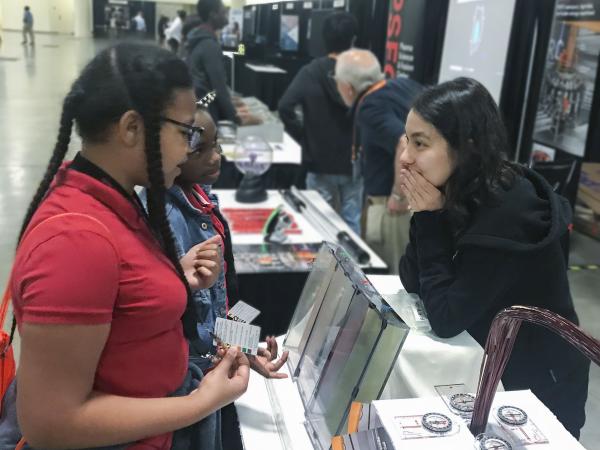
At the APS-DPP Plasma Science Expo graduate student Muni Zhou waits for Fort Lauderdale students to predict how plexiglass, aluminum and copper will affect the rate at which a magnet will slide down an incline.
Paul Rivenberg
Public outreach efforts at MIT and the American Physical Society provide insights into fusion research.
October 30, 2019
The month of October provided the Plasma Science and Fusion Center (PSFC) with consecutive opportunities to educate students and the general public about the science and technology that support plasma fusion research: MIT Energy Night (October 11) at the MIT Museum, and the American Physical Society Division of Plasma Physics (APS-DPP) Plasma Science Expo (October 24, 25) in Fort Lauderdale, Florida.
At Energy Night the PSFC along with colleagues from Commonwealth Fusion Systems (CFS) presented tables of demonstrations related to the new superconducting technology that has inspired their latest fusion project: SPARC.
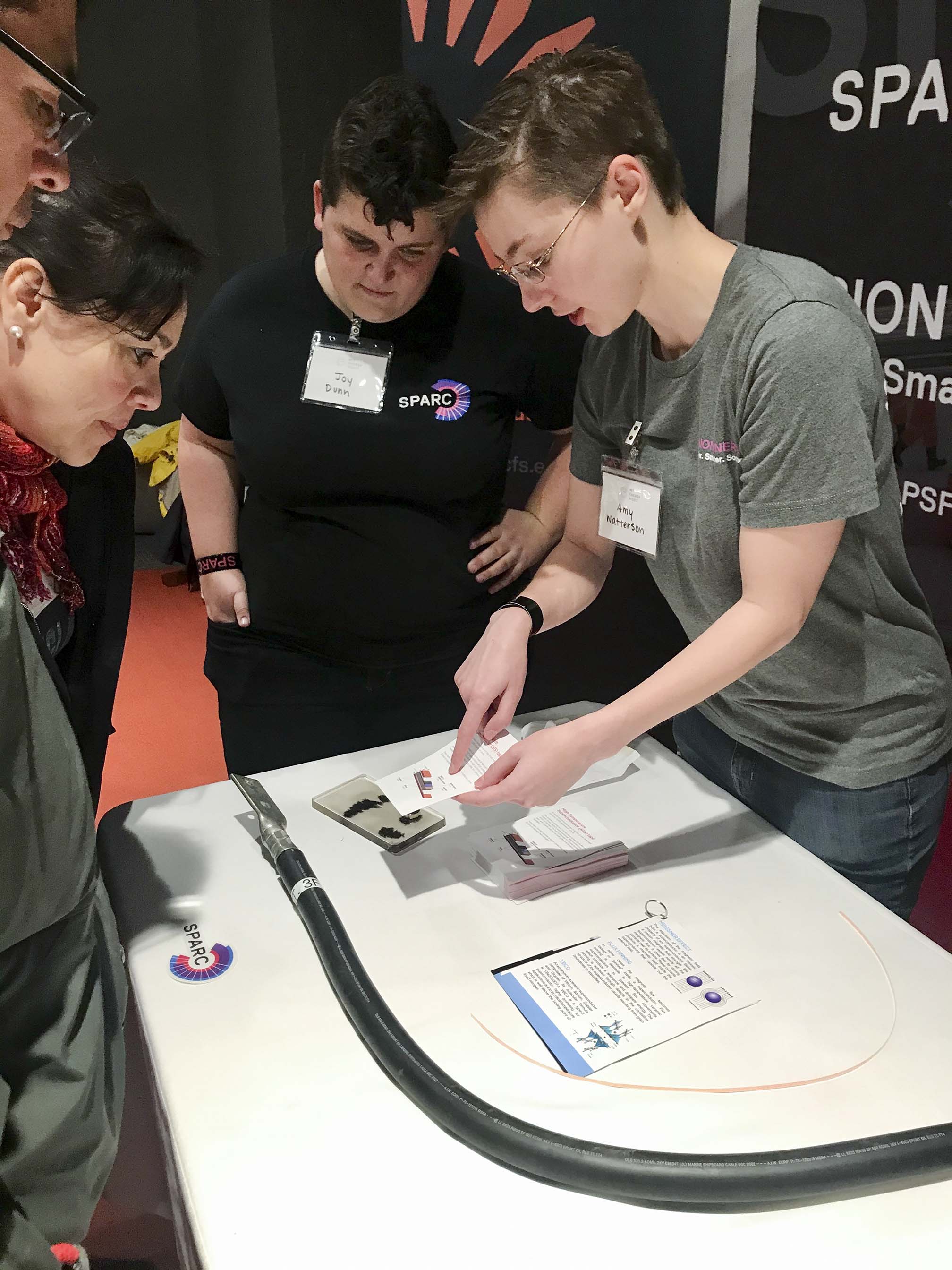 Mechanical engineer associate Amy Watterson, with visiting scientist Joy Dunn, spent time comparing today’s thin superconducting tape to the bulky coils that are used in existing fusion experiments around the world. It is hoped the new technology will clear a path to smaller fusion devices that can be built more quickly and at less cost.
Mechanical engineer associate Amy Watterson, with visiting scientist Joy Dunn, spent time comparing today’s thin superconducting tape to the bulky coils that are used in existing fusion experiments around the world. It is hoped the new technology will clear a path to smaller fusion devices that can be built more quickly and at less cost.
The event proved popular, the line to enter stretching out the door for most of the 2.5 hours. Crowds thronged the prominent area on the first floor set aside for the PSFC. Some gathered to watch a superconducting disc (cooled by liquid nitrogen) as it sped above a circular track; others observed a magnet push a plasma away from the wall of a glass tube, illustrating a property key to magnetic confinement fusion.
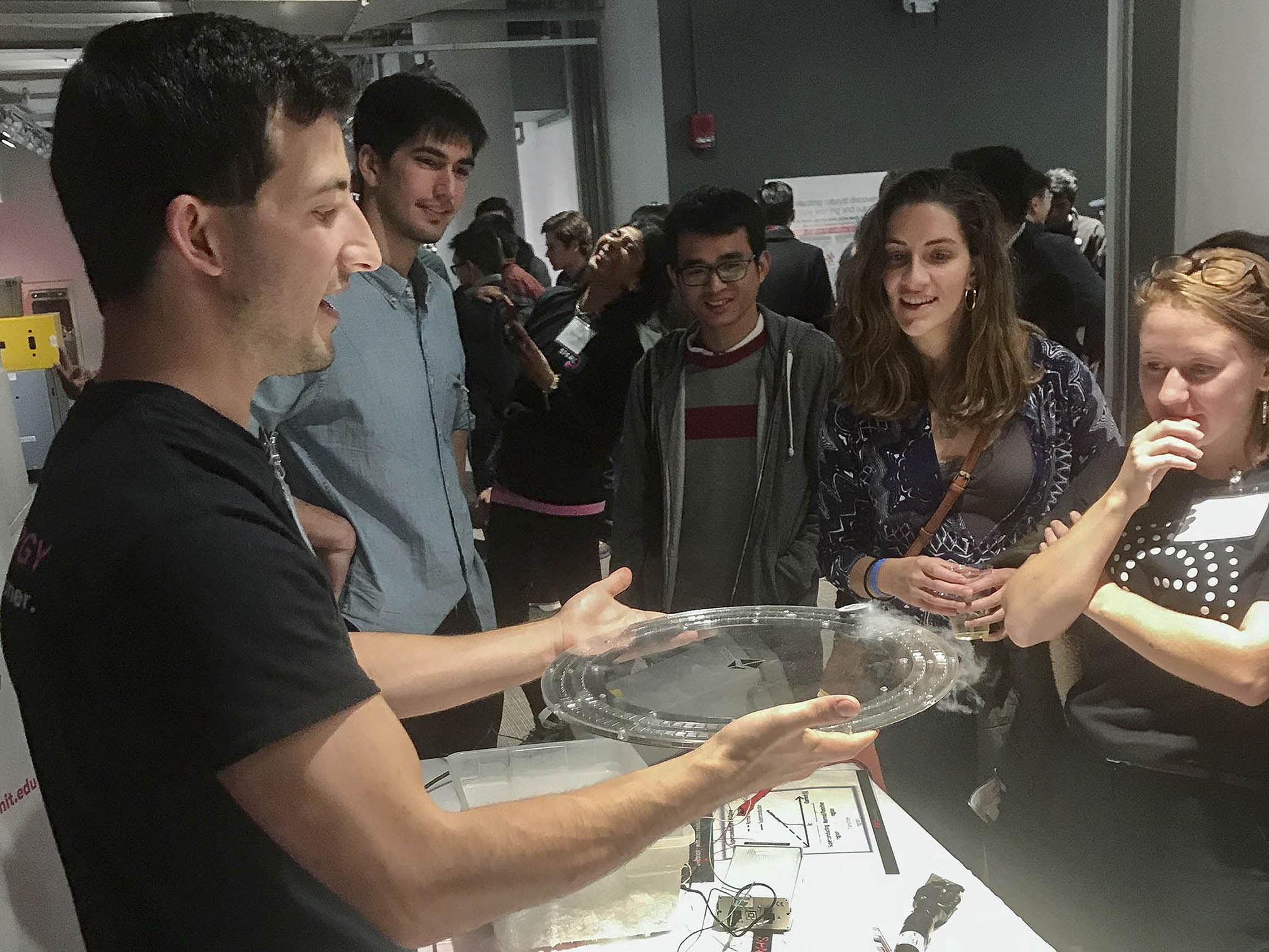 Mechanical engineer associate Vinny Fry levitates a superconducting disc above a circular track.
Mechanical engineer associate Vinny Fry levitates a superconducting disc above a circular track.
The event was heavily attended by the MIT community as well as members of the general public eager to be introduced to the latest energy research at MIT.
PSFC staff and students engaged with a younger crowd later in the month at the APS-DPP Plasma Science Expo in Fort Lauderdale, Florida. Held in a different city each year in conjunction with the DPP’s annual meeting, the Expo focuses on middle and high school students and their teachers.
PSFC Education and Outreach Coordinator Paul Rivenberg leads the organization of the Expo, communicating with exhibitors to assure a good experience for all participants. He works on the APS-DPP Education Committee with MIT alumnus Arturo Dominguez, now DPP Education Chair and Science Education Senior Program Leader at Princeton Plasma Physics Laboratory, and Julie Harris from General Atomics in San Diego, where the PSFC collaborates on the DIII-D tokamak experiment.
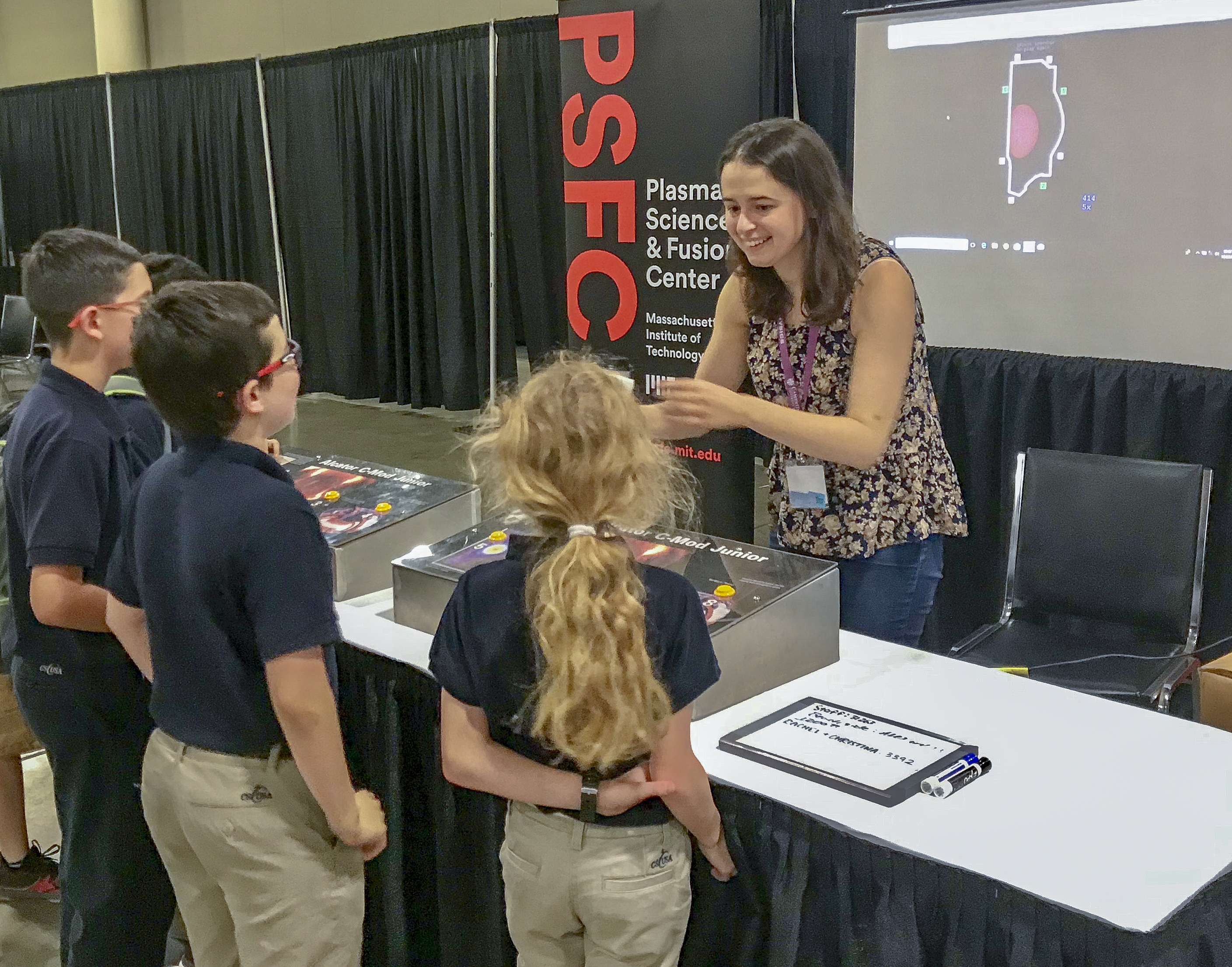 Graduate student Libby Tolman introduces students to magnetic confinement fusion using a tokamak simulation video game.
Graduate student Libby Tolman introduces students to magnetic confinement fusion using a tokamak simulation video game.
The PSFC was one of 28 Expo exhibits available to students and the general public on October 24 and 25, including Lawrence Livermore National Laboratory, Los Alamos National Laboratory, the Laboratory for Laser Energetics and NASA. At the PSFC booth visitors were invited to magnetically contain a hot plasma in a virtual tokamak, to predict the outcome of magnets racing down inclines lined with different materials, and to observe how compasses positioned around an electromagnet signal the direction of the magnetic field. Students were invited to complete the circuit on a plasma sword to create a plasma. New this year was a demonstration of how liquid nitrogen creates zero resistivity in a superconductor, which is key to successful magnetic confinement.
PhD candidate Abhi Mathews participated in both the MIT and APS events.
“Energy Night was a great way to interact with members of the MIT community and general public,” he says. “Visitors had numerous stimulating questions ranging from the shaping of tokamak plasmas to fusion energy's outlook in the near future. The Plasma Science Expo at APS DPP was also a fun way to engage young students to get them questioning and understanding how commonplace items such as magnets actually work. Exhibiting demonstrations such as waves in a plasma discharge tube and magnet slowly falling down a copper tube allowed participants to directly observe theory in action.”
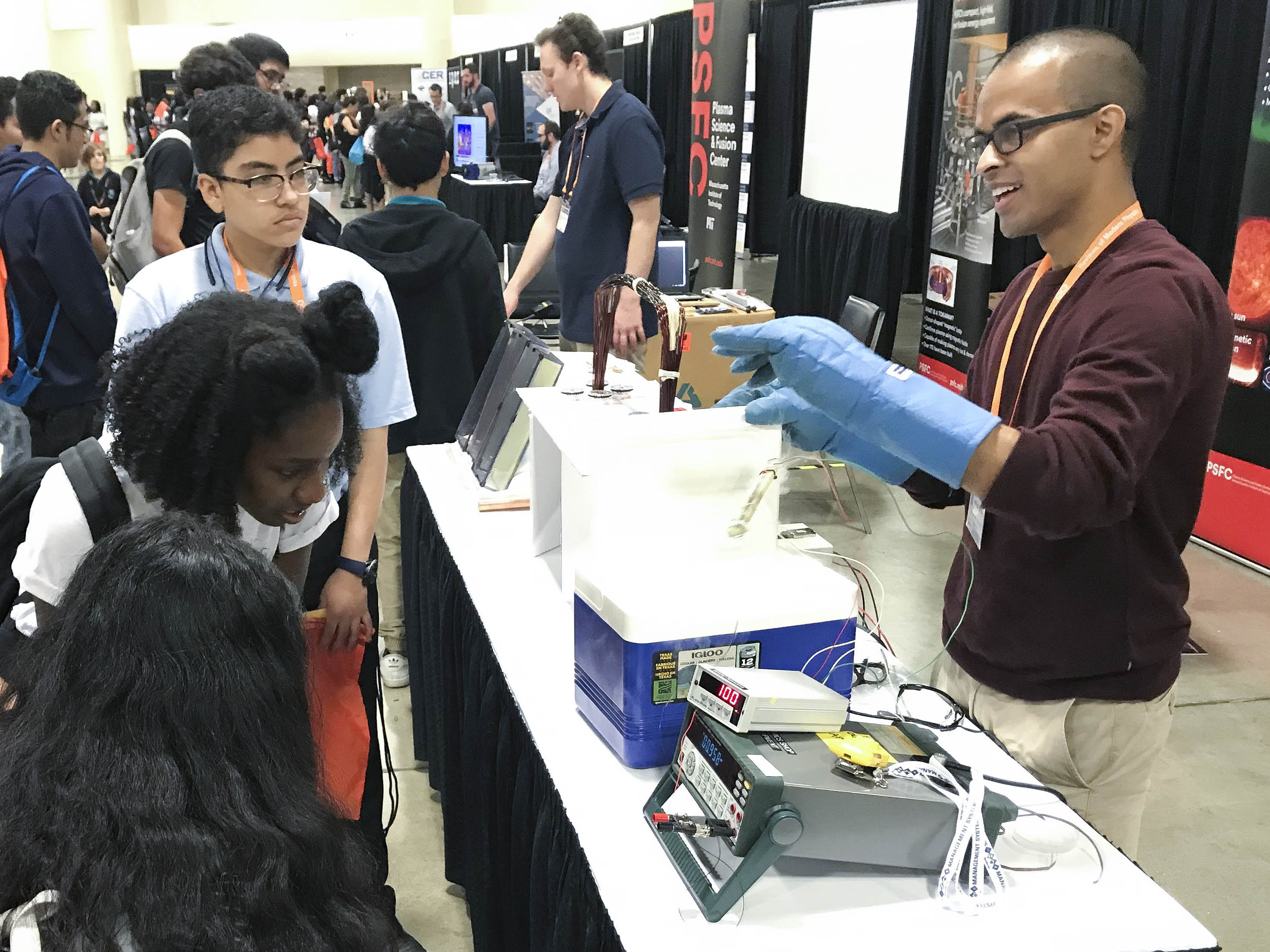
Abhi Mathews explores the impact of liquid nitrogen on a superconducting magnet at the Expo.
Many of the school groups who attended the Expo were led by teachers who had attended a special APS-DPP Science Teacher Day on October 22. As part of this day, PSFC postdoctoral associate Andrew Seltzman held a popular workshop entitled “Teaching Plasma Physics through Classroom Demos.” His demonstration of how to pull plasma from a “plasma ball” into a plastic syringe left teachers awestruck, until they eventually mastered the technique.
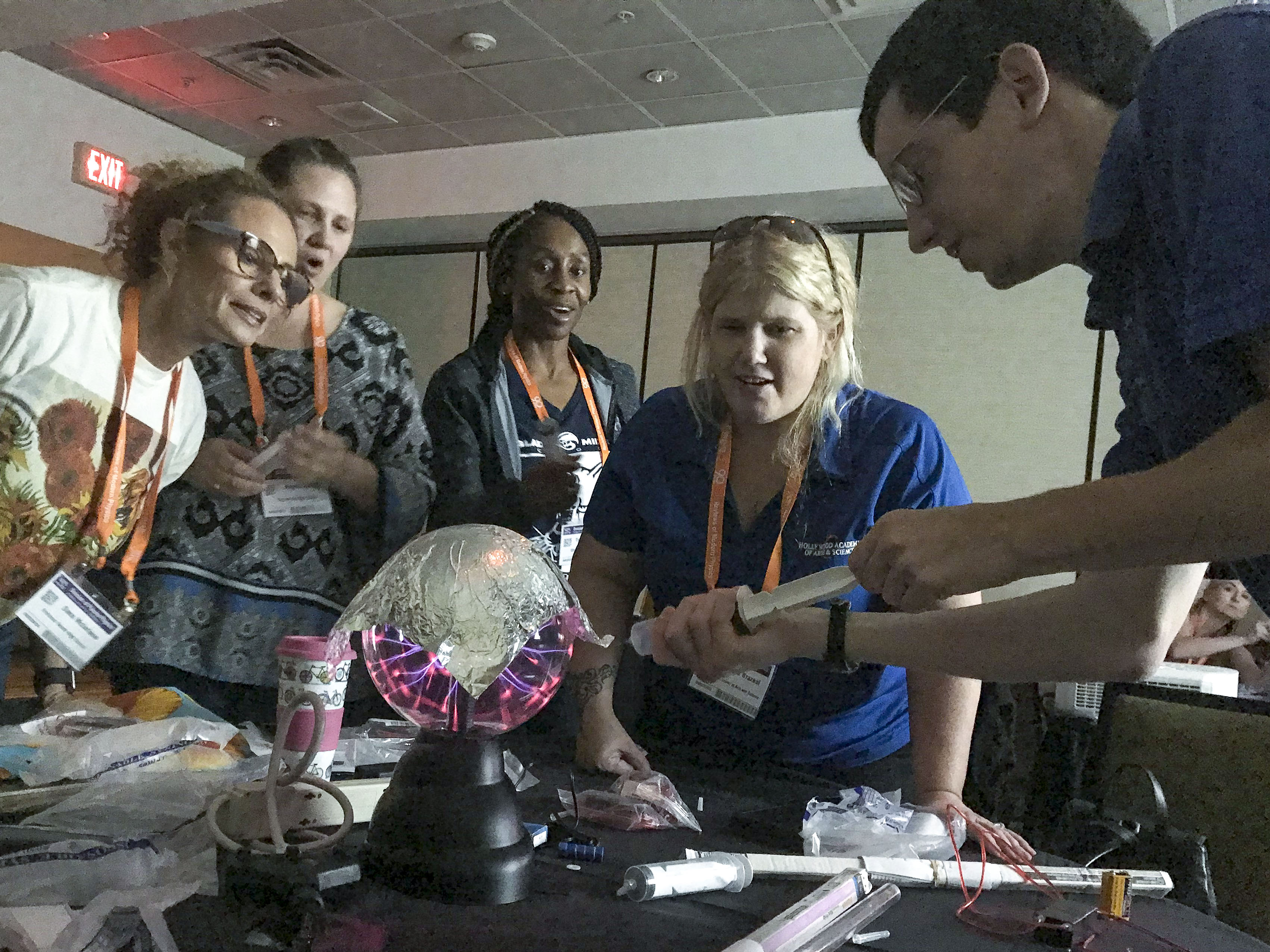 Andrew Setlzman demonstrates his technique for drawing plasma into a plastic syringe.
Andrew Setlzman demonstrates his technique for drawing plasma into a plastic syringe.
Although the meeting provides an excellent opportunity for scientists to meet and educate the general public, its main goal is to provide a venue for fellow scientists to share their latest plasma research. Besides oral presentations and invited talks, the PSFC also organized a special “town hall meeting” to provide an update about SPARC and a review of PSFC plans for a “fast-track” path to fusion energy based on high-field magnets. The town hall was structured to inform the ongoing community planning activity sponsored by the DPP. Overall interest in SPARC throughout the week was very high.
As part of the meeting, Maria Gatu Johnson, research scientist with the PSFC High-Energy-Density Physics Division, received the Katherine E Weimer Award, announced earlier this year. It recognizes outstanding plasma science by a woman physicist in the early stages of her career. Gatu Johnson collaborates on inertial confinement fusion experiments at the National Ignition Facility.
Next year’s APS-DPP meeting will be in Memphis. The education committee is already planning a midwinter meeting with STEM professionals from the area, to assure a successful event in 2020.
PSFC education program activities are sponsored in part by the U.S. Department of Energy, Office of Fusion Energy Science.
Topics: Plasma science, SPARC, High field magnets, Paul Bonoli